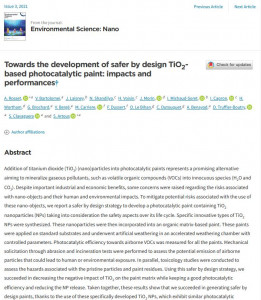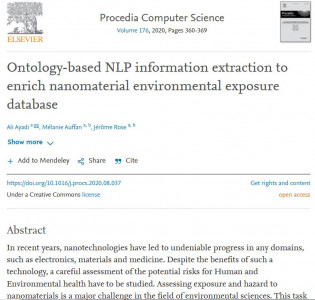Article on "Sub-acute intravenous exposure of Fe2O3 nanoparticles does not alter cognitive performances and catecholamine levels, but slightly disrupt plasma iron level and brain iron content in rats. Sub-acute intravenous exposure of Fe2O3 nanoparticles does not alter cognitive performances and catecholamine levels, but slightly disrupt plasma iron level and brain iron content in rats." by Aski, D., Ouni, S., Galai, S., Chovelon, B., Arnaud, J., Lehmann, S., Sakly, M., Seve, M., Amara, S. 2018
Abstract:
Engineered nanomaterials are used in various applications due to their particular properties. Among them, Iron Oxide Nanoparticles (Fe2O3-NPs) are used in Biomedicine as theranostic agents i.e. contrast agents in Magnetic Resonance Imaging and cancer treatment. With the increasing production and use of these Fe2O3-NPs, there is an evident raise of Fe2O3-NPs exposure and subsequently a higher risk of adverse outcomes for the environment and Human. In the present paper, we investigated the effects of an intravenous daily Fe2O3-NPs exposure on Wistar rat for one week. As results, we showed that several hematological parameters and transaminase (ALT and AST) levels as well as organ histology remained unchanged in treated rats. Neither the catecholamine levels nor the emotional behavior and learning / memory capacities of rats were impacted by the sub-acute intravenous ex- posure to Fe2O3-NPs. However, iron level in plasma and iron content homeostasis in brain were disrupted after this exposure. Thus, our results demonstrated that Fe2O3-NPs could have transient effects on rat but the in- travenous route is still safer that others which is encouraging for their use in medical and/or biological appli- cations.









